Which poly nuc?
Which is the best poly nuc? Over the last few years a number of manufacturers and suppliers have started selling polystyrene nucleus (poly nuc) hives in the UK. Some of these are specifically designed around the popular British National frame dimensions, others take advantage of the larger size of Langstroth frames to provide a box that will accommodate National frames, or that can be readily modified to take them.
I’ve used three of the most widely available – in order of increasing price – from Paynes, Modern Beekeeping and Thorne’s. I’ve also commented on the use or modification of each of these poly nucs elsewhere on this site. To simplify the comparison I list below what I consider to be the best and worst features of each of these poly nucs, with a few additional comments on their use.
Paynes poly nuc (£31)
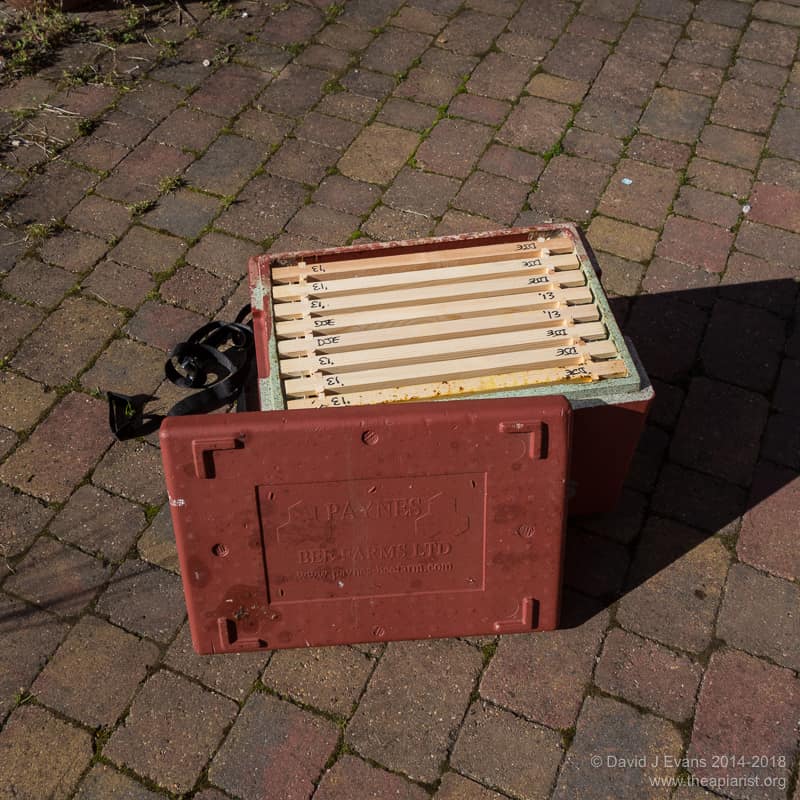
Space for 8 frames … just
Pros
- British National dimensions (6 frame), no modification needed
- Eke available for 14×12’s or to feed fondant
- Reasonable price, particularly if you buy in the sales or in bulk (good discounts can be had)
- Convenient handles for carrying
- Easy to paint
- Box plus lid, no removable floor (wire open mesh floor)
- Can be readily converted to a (more useful) 8 frame poly nuc
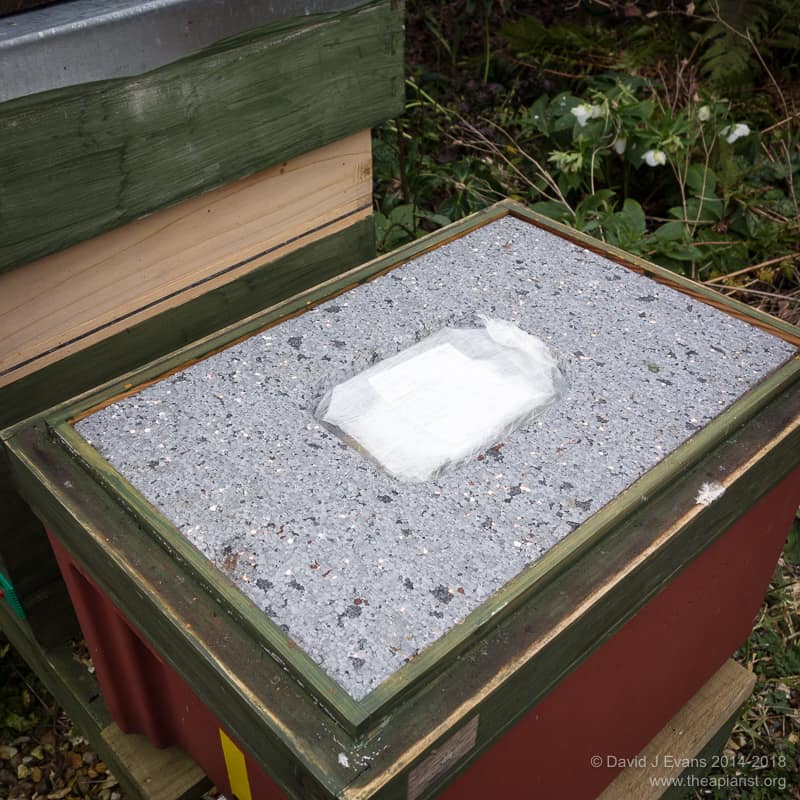
Insulated eke …
Cons
- Internal feeder is too narrow and is difficult to empty if the box is occupied with bees
- Box plus lid, no removable floor
- Roof is far too thin and flimsy (build an insulated eke for winter use), side walls are just about OK
Modern beekeeping (Paradise Honey) poly nuc (£37)
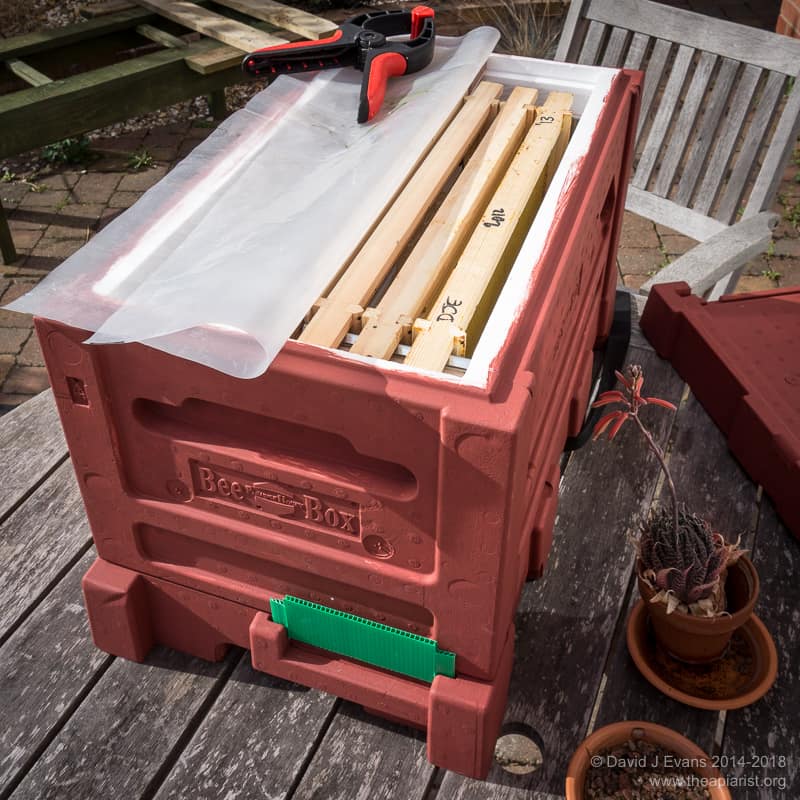
MB poly nuc …
Pros
- High quality build with dense, thick, poly
- 6 frame
- Entrances at both ends for conversion to dual, three frame nuc – which can also be achieved with National frames and a bit of DIY
- Thick roof requiring no additional insulation
- Removable floor with integral plastic mesh
- Good handholds for carrying
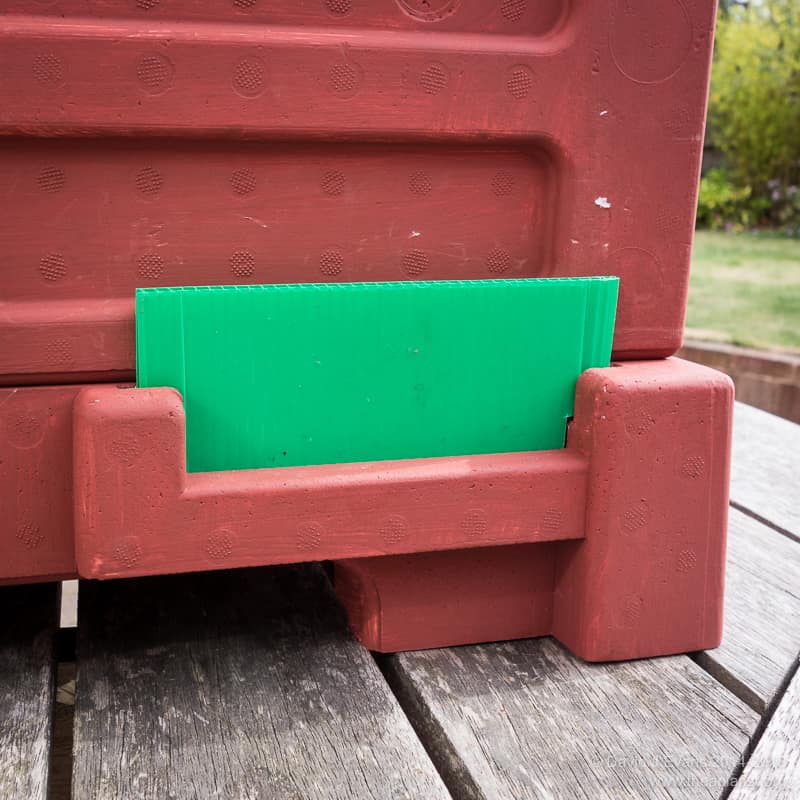
Correx entrance block …
Cons
- Langstroth dimensions (only an issue if you don’t use Langstroth frames of course)
- Too many nooks and crannies to make painting easy – at least with a brush
- Requires strapping together for transport (removable floor)
- Entrance reducers are a daft price (but Correx makes a good substitute)
Thorne’s Everynuc (£47)
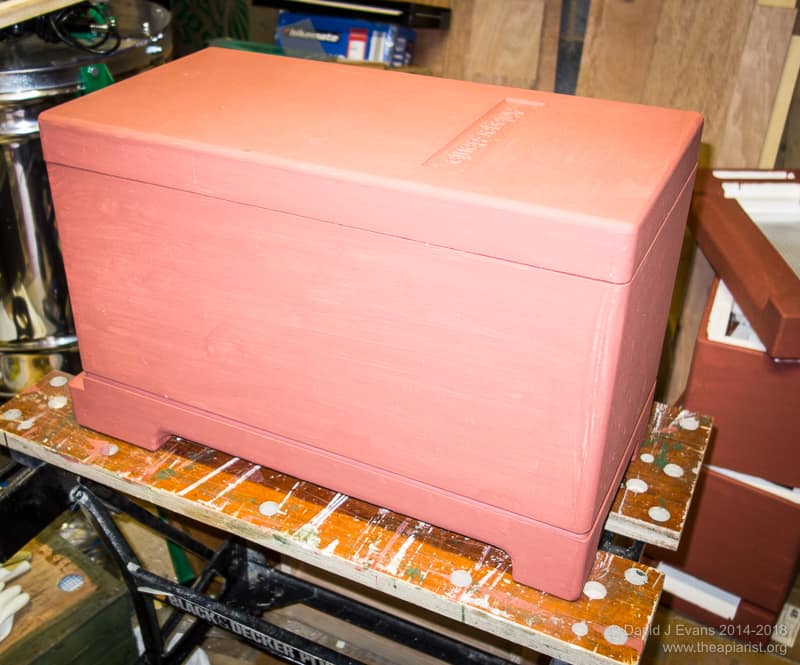
Everynuc …
Pros
- High quality build with dense, thick, poly
- 5 frame (plus a dummy board)
- Excellent thick, solid roof
- Clear plastic crownboard
- Removable floor with integral wire mesh
- Varroa monitoring tray
- Integral syrup/fondant feeder (users of Langstroth frames can buy a nicely designed polystyrene Miller-type syrup feeder)
- Smooth roof and side – easy to paint
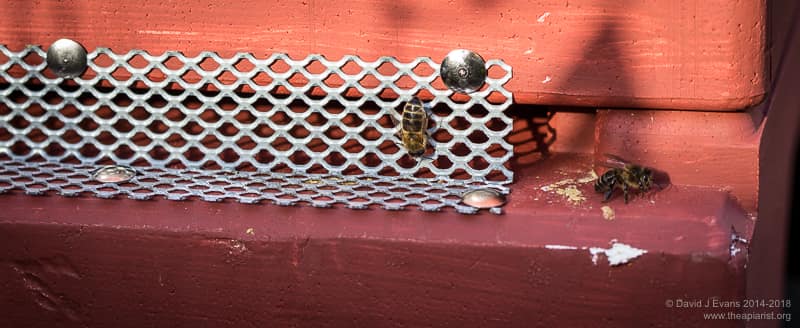
Entrance reducer …
Cons
- No convenient handholds for carrying
- Entrance is much too large and no entrance block supplied
- Bee space is a bit wayward in places
- Langstroth (but already converted to National, so not really a con at all)
Conclusions
You will likely see lots of the Paynes poly nucs in visits to apiaries. They were one of the earliest to the market and can be bought in bulk at a big discount. However, price aside, there are too many compromises in my opinion to make them a good investment, particularly if you intend to routinely overwinter colonies. Nevertheless, when converted to 8 frame boxes (as originally described on the BBKA forums), they are excellent for collecting swarms – light enough to carry up a precarious ladder, no removable floor to drop and large enough for all but the very biggest prime swarms. Some people also use them as bait hives, though the volume is not ideal according to Tom Seeley.
Quality-wise there is little to choose between the MB/Paradise Honey and Thorne’s Everynuc. Other than the issue of painting, if you use Langstroth frames, either would be an excellent investment. However, the Thorne’s Everynuc can be purchased with an integral feeder that also converts the box to take National frames “off the shelf“. Despite the higher price, this convenience and the removable Varroa tray, probably makes the Everynuc the best choice. The deficiencies of the Everynuc can be readily fixed. With care, poly nucs should last a couple of decades at least, which makes the price premium for the Thorne’s offering (actually built in Germany) pretty much irrelevant.
Join the discussion ...